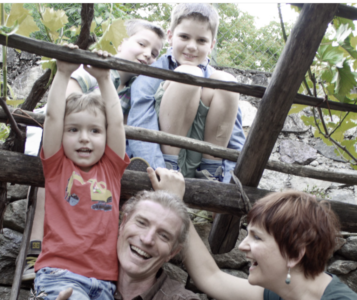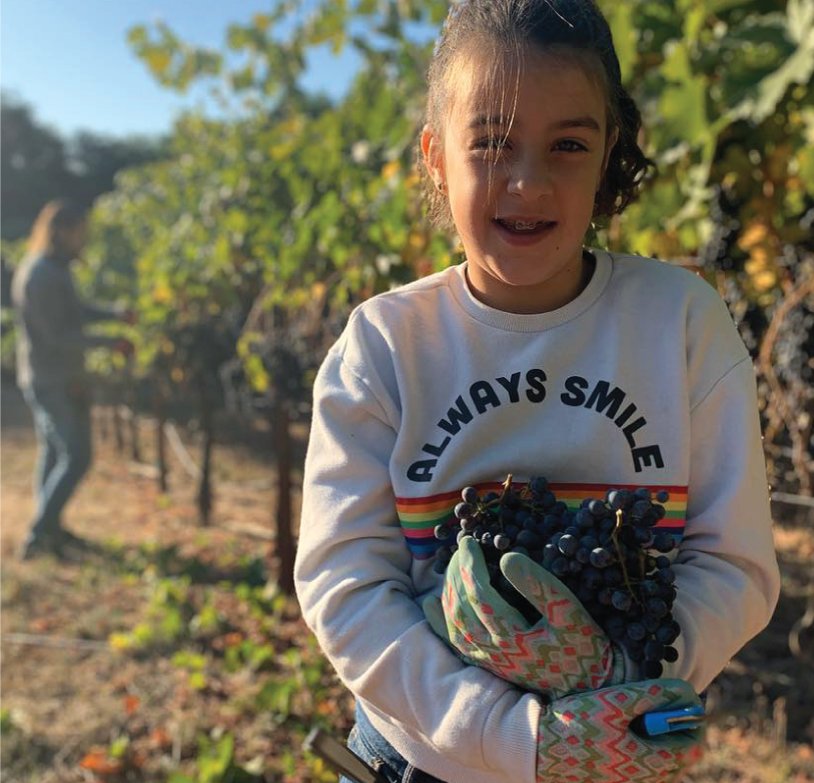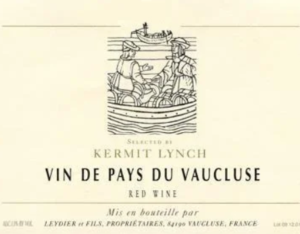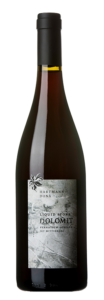‘CHEAP N CHEERFUL’ SELECTIONS – October, 2023
- Kermit Lynch Vaucluse Red (FR)
- Hartmann-Dona Schiava “Liquid Stone” (IT)
- Omen Zinfandel, (CA)
- Remy Saves the Sea Rose (CA)
- Elk Cove Pinot Gris (OR)
- Talai Berri Txakolina Finca Jakue Blanco (IT)
Kermit Lynch Vin de Pays du Vaucluse Red Wine (FR) $16
The Wine
There is a very high pleasure/dollar ratio here. I daresay you’ll find it difficult to believe the price once you taste the wine. Buying a case to stash away for emergencies (like “hey, it’s Wednesday!”) is a decision made by many wise wine lovers before you read this idea here.
Kermit Lynch is on the short list of our long-time favorite importers. And for many years he’s worked with the Leydier family, the owners of Domaine de Durban. This wine is sourced from vineyards of and around this Domaine, but the story of how this came to be is a classic. The vineyards were traditionally used for the Leydier family’s personal consumption or else simply sold off in bulk. And because the wines from this vineyard were never destined for commercial bottling, the family made no effort to have these parcels included in the A.O.C. Côtes du Rhône when the boundaries were first established in 1937.
Upon hearing the family had been selling these grapes to the local cave cooperative in Vacqueyras, Kermit presented the Leydiers the idea of creating a value-driven second label to Domaine de Durban. A collaboratoin was formed and together, they now bottle both a Vin de Pays de Vaucluse Rouge and Blanc.
Kermit, (very) Briefly
In 1972, with a $5,000 loan and no shortage of gumption, this writer/musician opened Kermit Lynch Wine Merchant in Berkeley, CA. His opening inventory of 35 cases of wine were stacked simply on the floor (a merchandising approach he still embraces).
Attracted by the Old World wine cultures of Europe, Kermit (Right) became an advocate for authentic wines that express their terroir. His influence has been enduring, to say the least. He has led the way for many other boutique importers who discover small, artisan producers winning two James Beard awards along the way. He sets a high bar for all who follow in his footsteps.
Hartmann-Dona Schiava “Liquid Stone”, Dolomit (IT) $21
The Winemaker

Hartmann family at play
In his own words, Hartmann’s insight seems familiar to many home gardeners who have discovered “my strength lies in understanding three factors – soil, vines, and weather – and in interpreting and working with them.” That is how original and unique products are created. It is in the differences from one year to the next that create the exclusive characteristic of nature’s authentic products.
The main characteristics – the house style – of his Donà wines are elegance, harmony, alpine freshness and minerality. They express a remarkable capacity for aging and can be extraordinarily long-lived for those who have the self-control not to separate them from their corks at a young age.
The winery is a family affair, with the couple and their three kids each contrbuting to the enterprise.
The Wine
Hartmann’s Liquid Stone series consists of four wines that showcase the Schiava grape grown in four different terroirs and soil types. This particular wine bears the DOLOMIT label and contains he fermented jusice of Schiava grown on 40-year-old vines from the south of the Sud Tyrol. This vineyard is one of the warmest in the Liquid Stone line (next to Phyllit, Granit and Vulkanit). Each of these is a different expression of the same grape (Schiava) on different soil types.
This vineyard faces southeast from its perch 1,000 feet above sea level. The soil is chalky, loamy and stony forcing the roots of the old vines to push deeper and deeper into the earth, and yet still they can only provide enough sustenance to support a sluggish growth that yields small Schiava grapes with high sugar, tannins and lower acidity. This is a wine that showcases the warm and robust side of the Schiava.
The fully ripe grapes ferment in wooden vats. Afterwards, the young wine continues to age in wooden barrels for 9 months. The result? A spicy wine that shows full ripeness and a velvety texture!
Omen Zinfandel “Origin”, Sierra Foothills (CA) $19
 The Wine
The Wine
Any tasting note for this wine focuses on its relatively low alcohol (13 – 13.5%), which allows its fruity perfume to shine unencumbered by heavy extraction, alcohol or oak. Medium-bodied offers complex aromas featuing hints of cedar, the tell-tale Zin notes of ripe blackberry, plum and a high note of raspberry. Armoatics finish with sweet pie spices – clove, cedar, cardamom and cinnamon – that beg for this wine to be paired with food!
The Winemaker

Omen is one of two brands from Atlas Wine Co, created to seek out hidden gem wine appellations throughout the West coast.
As his Bio goes, French-born Alexadre Remy left the world of Luxe producers in France (Rothschild, Moet & Chandon) and many other global wine regions. Whether he was burned out or simply seeking to shed his varoius lieges, he found refuge with his own Atlas Wine co, a start-up located in California’s up-and-coming Sierra Foothills. They can be found in the town of Fairplay, a whimsical name which seems almost portentious here, almost like an omen. See what I did there?
It is here he has joined other Napa notables such as Marco Capelli (formerly of Swanson), Helen Kiplinger and Andy Ericson (the man behind the Casino Mine Greco we featured previously) as they pursue new challenges outside the confines of Napa.
His guiding principles include wines made with low sulfites (<75 PPM, for those counting), no toxic additives, Vegan/Paleo/Keto-friendly, without residual sugar – just as with most of the wines we carry. But his wines are, somehow, remarkably, priced under $20. No surprise they’ve come to be known for their impressive value.
‘Remy Saves the Sea’ Sonoma Rosé (CA) $18.50
 This is an entirely different Remy than the one profiled above. In this case, Remy is a young woman of some 13 years. And she’s a surfer who learned to love the sport with her Dad, Noah. No seriously, that’s his name. And no, he doesn’t own an ark. Let’s get back to our story, shalllll we?
This is an entirely different Remy than the one profiled above. In this case, Remy is a young woman of some 13 years. And she’s a surfer who learned to love the sport with her Dad, Noah. No seriously, that’s his name. And no, he doesn’t own an ark. Let’s get back to our story, shalllll we?
Remy grew increasingly concerned about the state of our oceans and beaches. Micro plastics. Oil. Dying species. The whole bit. So what’s a young sea-loving person to do?

Well if your father is Noah Dorrance, who took a small fortune from the sale of Banshee wines, then started his own winery named after his son, Reeve, if THAT guy is your dad,
you convince him to create a Rose wine that sends a portion of proceeds to save the sea, hence the name. And that’s exactly what Remy did. Label art and all. And it’s been our best-selling rosé all summer long.
If ever there was a wine to convince rosé-lovers that the wine can be a year-round pleasure, this is it.
Did you know?
Did you know that about 17.6 billion pounds of plastic—or the equivalent of nearly 57,000 blue whales—is dumped in the ocean every single year. By 2050, ocean plastic will outweigh all of the ocean’s fish.
Elk Cove Estate Pinot Gris (OR) $20
The Winery
 Do you remember what you were doing in 1974? I remember it as the year Nixon resigned – I was a high school student working that summer on a furniture loading dock when the news came over the radio. I knew it was historic.
Do you remember what you were doing in 1974? I remember it as the year Nixon resigned – I was a high school student working that summer on a furniture loading dock when the news came over the radio. I knew it was historic.
 But if you were Pat and Joe Campbell, an ER physician from a family of farmers, you’d be making your own history. As Tricky Dick was waving goodbye as he boarded Air Force One, the Campbells were pulling a small camper trailer, the family home for the next year, up to your ‘new’ property in the hills of Oregon. The abandoned orchards were overgrown and had little water, so the Campbells looked for a crop that could survive in low water conditions. To make a long story short, wine grapes were planted, wine was made, and the Campbells named their farm “Elk Cove Vineyards” after a herd of elk that once settled in around their trailer for the night.
But if you were Pat and Joe Campbell, an ER physician from a family of farmers, you’d be making your own history. As Tricky Dick was waving goodbye as he boarded Air Force One, the Campbells were pulling a small camper trailer, the family home for the next year, up to your ‘new’ property in the hills of Oregon. The abandoned orchards were overgrown and had little water, so the Campbells looked for a crop that could survive in low water conditions. To make a long story short, wine grapes were planted, wine was made, and the Campbells named their farm “Elk Cove Vineyards” after a herd of elk that once settled in around their trailer for the night.
 Elk Cove became Oregon’s 10th licensed winemaking facility, located in what would someday be the famed Yamhill-Carlton wine region. In short order their wines were winning awards, and that was the beginning of what would become an impressive business. Today their son, Adam, is at the helm, managing six vineyards with 380 planted acres – over ten times the size of his family’s original planting. Oregon now boasts more than 700 wineries, but Elk Cove was there from the early days (photo, left – the 10th winery must have doubled as photographer!). They remain one of the last of the early pioneers to be family-owned and operated.
Elk Cove became Oregon’s 10th licensed winemaking facility, located in what would someday be the famed Yamhill-Carlton wine region. In short order their wines were winning awards, and that was the beginning of what would become an impressive business. Today their son, Adam, is at the helm, managing six vineyards with 380 planted acres – over ten times the size of his family’s original planting. Oregon now boasts more than 700 wineries, but Elk Cove was there from the early days (photo, left – the 10th winery must have doubled as photographer!). They remain one of the last of the early pioneers to be family-owned and operated.
The Wine
When it comes to white wines, Oregon is known for its Chardonnay. But to me it’s their Pinot Gris that is the standout – great wine, food-friendly, and a true bargain even on the world stage, which is rare for a domestic wine! In this incarnation, the wine offers aromas and flavors dominated by stone fruits, candied ginger and peach. Would be a perfect match for one of my favorite Italian dishs – a simple slice of perfectly-ripened melon, wrapped in prosciutto. We don’t sell melons, but you can get everything else in either of our shops!
Talai Berri Finca Jakue White Txakoli (ES) $19.50
The Winery
As a man who spends his days helping customers discover new favorites from obscure corners of the wine world, it does my heart good to see the rise in popularity of wonderful but obscure varietals. The Txaolina (chock-oh-LEE-nah) wines join the ranks of other once-obscure wines that have enjoyed recent surges in popularity among curious wine lovers – dry roses, Gruner Veltliner, Vinho Verdes, Assyrtiko, those from volcanic soils, and several others I’m forgetting.
The Basque wine country is found just West of the Pyranees, where France and Spain’s shared border ends. Since the dawn of humankind, this region has been a prolific source of Atlantic seafood and Ports of call. This particular wine comes from Getariako, one of three Txakolina appellations, that takes its name from the sea-side town of Getaria (right). Known for its gastronomy, the town benefits from fishing boats that provide daily fish supplies to the many area restaurants. And the wine they serve? Txakolina is everywhere!
Though the winery, Talai Berri, is unknown to many outside the Basque region, they are a local legend. Back in 1992, they became the first winery to be built from the ground up to satisfy all the requirements of the new “Txakoli de Getaria Guarantee of Origin (1989)”. Though the Eizaguirre family had produced wine for generations, the new requirements made for a frustrating and protracted compliance effort until owner Bixente Eizaguirre decided to chuck it all and build a new, fully-compliant winery.
The Wine
The grape used here is as much fun to say as it is to drink – the Honndurabi Zuri. But it’s DNA tests indicate an uncertain lineage that leaves us scratching our heads. It might actually consist of three different, even more obscure grapes, but let’s not let that unsolved mystery interfere with our enjoyment here. Note – there are also red and rose versions of Txakolina, made from a grape called Hondarribi Belza, but they are destined for even more localized consumptoin and rarely find their way to domestic wine shelves. If you see one, buy it, as they are worth tasting.
Reach for this bottle when you need a white wine with a slightest suggestion of fizz, a subtlelty that makes it refreshingly lift off the palate more than appear spritzy. The aromas hint at lychee nut, if you’ve ever been curious enough to buy one at the Asian food store. If not, know that it is both fruity and slightly nutty/medicinal – is that a hint of iodine I’m getting? (sniffs glass from other nostril, as if that will help, but all it does is look pretentious). Extended period of lees stirring has left this wine with an unctuous, mouth-filling richness. It’s middle-weight body seeks dishes with a similar constitution. Think Asian food, paella, Fall salads with sliced persimmon, and most richer versions of fish and definitely with roast poultry.





